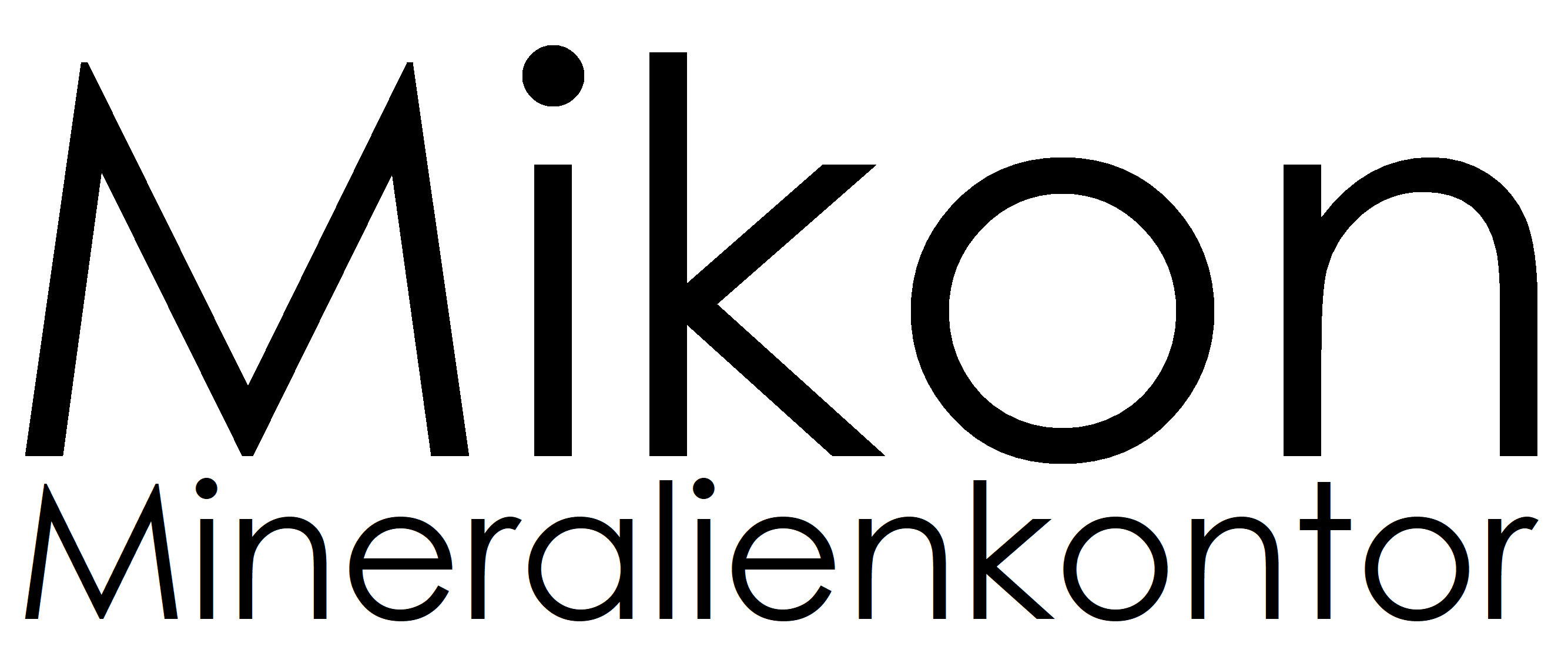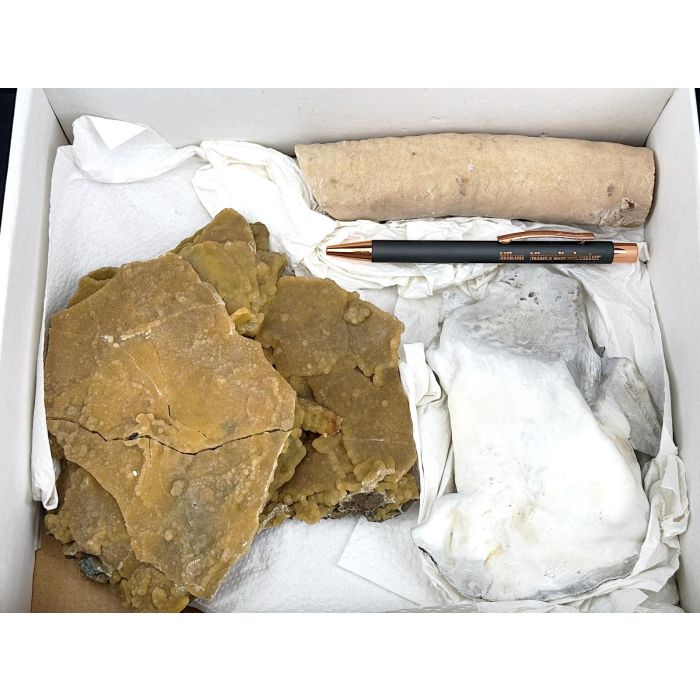Calcareous sinter from the Eisleben–Halle mining district in Thuringia, Germany – 1 unique half size flat
This unique collection features several specimens of calcareous sinter from the historical mining region around Eisleben and Halle in Thuringia. The pieces display various growth forms: broad yellow-brown sinter plates with fine drip textures, chalky white surface coatings, and a cylindrical stalactitic formation with clearly visible internal growth structures. These forms developed through the gradual deposition of calcium carbonate from mineral-rich waters in underground cavities and mine workings.
Calcareous sinter is a secondary calcium carbonate (CaCO₃) deposit that forms through evaporation and precipitation in air-filled spaces—much like stalactites in caves. In the former ore mining areas of Eisleben and Halle, sinter formed along the walls of abandoned tunnels and shafts, sometimes initiating early stalactitic structures. This flat offers a rare glimpse into the secondary carbonate deposition processes occurring in a historically significant mining context.

